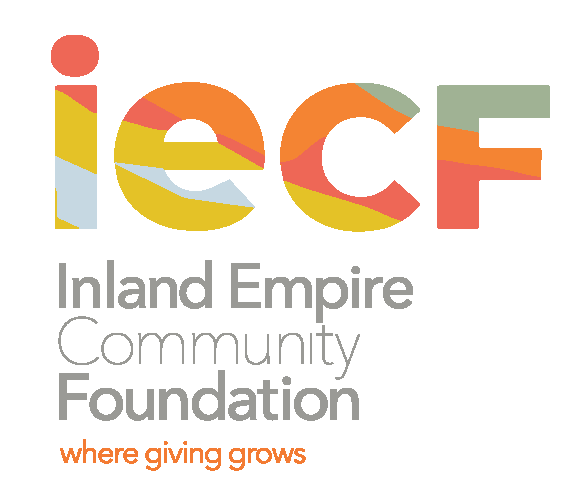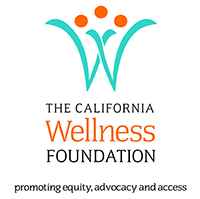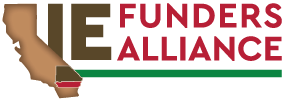How SCG's Philanthropic Network Responded to the 2024 Southern California Wildfires

The Southern California wildfires that began in September 2024 have caused extraordinary damage, particularly the Line Fire, Bridge Fire, and Airport Fire, which have collectively scorched over 105,000 acres of land.
The Line Fire charred the San Bernardino National Forest, endangering 65,000 structures, including homes near Big Bear Lake and Arrowhead. The Bridge Fire in Los Angeles County damaged the Angeles National Forest, destroying over 30 homes and six cabins and prompting evacuations of 10,000 people due to its rapid spread toward San Bernardino County. The Airport Fire started in Trabuco Canyon in Orange County and quickly spread to Riverside County, where it damaged homes in El Cariso Village and led to the evacuation of 19,000 people.
Not only have residents and businesses been affected, but the firefighters responding to these incidents have been impacted by a strain on resources and injuries from intense wind and heat conditions. At the time of publication, full containment remains elusive as resources continue to be stretched thin across the region and state. The map below depicts the location of the wildfires.
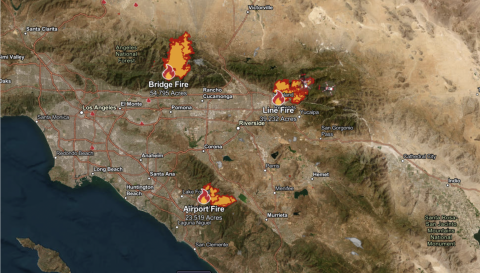
Source: California Department of Forestry and Fire Protection (CAL FIRE)
SCG Activates Disaster Response
At the onset of these fires, SoCal Grantmakers activated its disaster response function. Our team vetted active disaster funds in the region to elevate them on the Philanthropy California Disaster Response Page, which was shared through statewide channels such as the California Governor's Office of Emergency Services (Cal OES) Business Operations Center (BOC) daily briefing.
Through Philanthropy California's ongoing partnership with Cal OES – which focuses on providing direct technical assistance to nonprofits, community-based organizations, and tribes looking to access climate and disaster funding – our team helped streamline cross-sector communication between government, philanthropy, and nonprofits in Riverside and San Bernardino.
SCG Members and California Philanthropies Respond to Wildfires
Members of SoCal Grantmakers – alongside other philanthropic, government, nonprofit, and community organizations – have been a crucial part of disaster response and early recovery efforts. Our network has worked to ensure that resources are flowing where they are needed most, specifically to underserved communities at the front lines. Below are some of the specific ways our community has responded to the wildfires:
- Direct Relief supported the procurement and delivery of N95 masks and hygiene kits to support firefighters responding to the Line Fire.
- The Inland SoCal United Way, with support from The California Wellness Foundation, activated a disaster fund to help impacted communities replace lost items, pay for hotel stays, make deposits on new housing, and cover other fire-related needs. Arrowhead United Way activated its Emergency Assistance Fund to assist with hotel stays and temporary shelter deposits, food and grocery support, medical care and prescription assistance, pet care, and other emergency needs.
- The Inland Empire Community Foundation supported local nonprofits and community-based organizations serving underserved, frontline communities in San Bernardino and Riverside Counties.
- The Inland Empire Funders Alliance served as a shared messaging partner to amplify requests for information and needs.
- The California Fire Foundation coordinated the distribution of $250 cash cards through local government, local funders, and grassroots organizations in the Inland Empire to support individuals, families, and firefighters with emergent needs due to the incidents.
- The National Forest Foundation activated its Southern California Wildfire Fund to support the forest service in post-wildfire restoration in the Angeles National Forest and San Bernardino National Forest.
Road to Resilience
We must plan beyond immediate disaster response and consider how we can build long-term resilience.
SCG aims to support philanthropic institutions across the region and state in moving climate and disaster funding upstream toward investments in long-term recovery and resilience. Disaster response, the shortest phase of the disaster cycle, tends to receive the most attention and resources. Disaster resilience – which encompasses preparedness and long-term recovery – remains underfunded.
The image below comes from the Federal Emergency Management Agency's National Recovery Framework. The disaster recovery continuum shows that preparedness is ongoing, response lasts from days to months, and recovery can last from months to years.
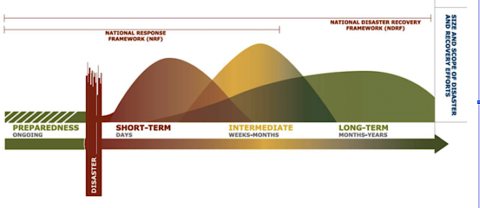
Image source: Federal Emergency Management Agency National Disaster Recovery Framework.
Timelines for funding resilience can be arduously long. To support recovery efforts from the July 2024 Park and Borel fires in Butte, Kern, and Tehama counties earlier this year, the Governor's Office requested a Presidential Major Disaster Declaration in September 2024. A Presidential Major Disaster Declaration includes requests for FEMA Individual Assistance, Hazard Mitigation Programs, Small Business Association (SBA) Disaster Loans, and U.S. Department of Agriculture Emergency Loans. Due to stipulations from the Stafford Act, presidential declarations can only be made when local resources have been overwhelmed according to data gathered during preliminary damage assessments, which can take considerable time to complete, especially if a wildfire has not reached full containment.
It is unclear whether or when there will be a similar presidential declaration for the Line, Bridge, and Airport Fires. However, a state-level emergency proclamation has been made for these incidents. In the meantime, communities affected by the September wildfires will rely on state and local resources to transition into recovery. Philanthropic support can also provide necessary bridge and gap funding for recovering communities as they await public funds to land.
A commitment to long-term resilience in Southern California requires that grantmakers align on the following guiding principles:
- Align public and philanthropic funding and grantmaking practices
- Build more organized ecosystems of regional funder networks, project pipelines, and climate collaboratives
- Facilitate opportunities to attract or win public funding that addresses existing, chronic social inequities exacerbated by climate change and disaster
Aligning funding streams ensures that resources are allocated where they are needed most. Fostering organized networks of projects and funders helps strengthen partnerships, collaboration, and coordination of shovel-worthy and shovel-ready initiatives. Finally, the ability to attract public funding ensures that the most underserved communities in our region remain competitive and well-supported in their resilience efforts, which ultimately creates a stronger, more prepared California for future climate challenges.
If you are interested in learning more about SoCal Grantmakers’ regional climate and disaster resilience work, please contact Lily Bui, PhD, Climate and Disaster Resilience Manager.
References
California Department of Forestry and Fire Protection (CAL FIRE). Current Emergency Incidents. Retrieved September 17, 2024, from https://www.fire.ca.gov/incidents.
CBS News. (2024, September 11). “Trio of wildfires put stress on California firefighting resources; track their burn areas with interactive maps.” CBS News. Retrieved from https://www.cbsnews.com/losangeles/news/bridge-line-airport-fire-map-evacuation-air-quality.
EcoWatch. (2024, September 12). 3 Southern California wildfires destroy dozens of homes, scorch more than 100,000 acres. *EcoWatch*. Retrieved from https://www.ecowatch.com/california-wildfires-2024-bridge-airport-line.html
Gulliver-Garcia, T., Kumar, S., Moore, K. C. ("Yna"), Sato, G., & Webster, R. A. (2021, November 10). “Measuring the state of disaster philanthropy 2021: Data to drive decisions.” IssueLab. https://search.issuelab.org/resource/measuring-the-state-of-disaster-philanthropy-2021-data-to-drive-decisions.html
Members Mentioned
Share this Story
Related Stories & Ideas
Let the Frontlines Lead: Supporting Grassroots Movements for a Climate-Resilient Future
Funders share experiences funding and participating in climate movements.
